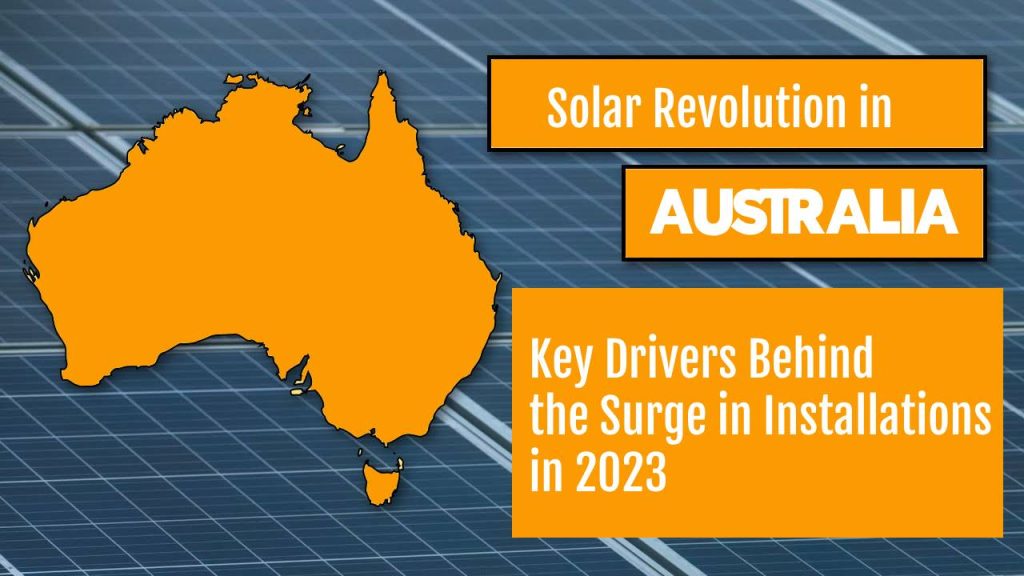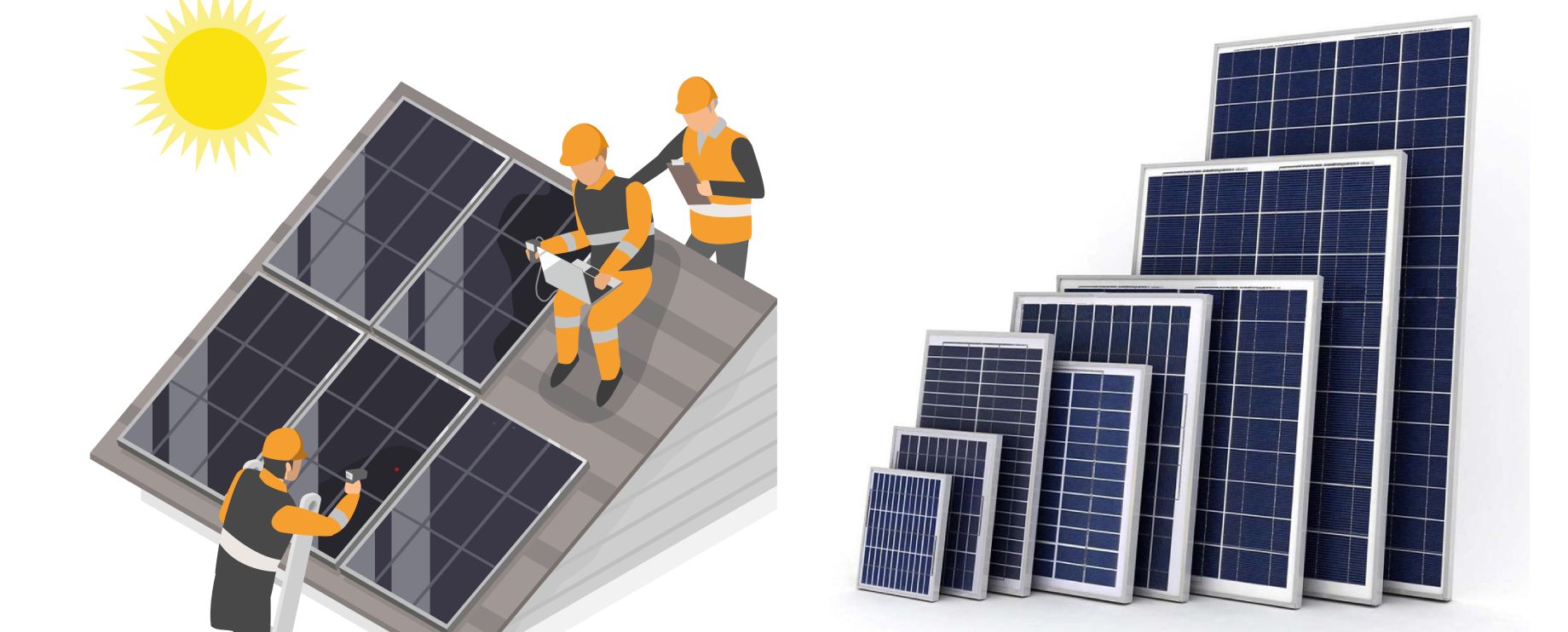
In 2023, Australia experienced unparalleled growth in the installation of rooftop solar PV systems unlike anything it had seen before. […]

Wondering what size solar system I need for my home?
You’re not alone.
Choosing the right solar system size is one of the most important steps in switching to solar energy. If it is too small, you won’t meet your energy needs; if it is too large, you could overspend unnecessarily.
Whether you’re aiming to slash your power bills, become energy independent, or reduce your carbon footprint, understanding the right system size for your household is key. In this guide, we’ll break down everything you need to know to make a smart, tailored choice.
The size of the solar system you need depends on a few key factors, like how much energy you use, your available roof space, and your budget. This article will walk you through how to determine the right size solar system for your home.
We will detail how you can estimate your average energy usage, determine how many panels that translates to, consider available installation areas on your property, and evaluate different system sizes based on your energy and financial needs.
By the end, you’ll have a much better sense of what size solar system fits your situation. The good news is, with the dropping cost of solar, systems are more affordable and accessible than ever, so you can’t go too big! Now, let’s get started.
To figure out what solar system size you need, you first need to calculate your average monthly energy usage. This isn’t as complicated as it sounds. Here are the basic steps:
First, gather your utility bills from the last 12 months. Look at your total kilowatt-hours (kWh) used for each month. Add up all 12 months and divide by 12 to get your average monthly usage in kWh.
Next, determine if you want a grid-tied or off-grid solar system. For most homeowners, a grid-tied system is best as it’s less expensive and you can still use utility power as a backup.
Related reading;
With an off-grid system, you’ll need battery storage and a larger solar array to power your entire home.
Once you know your average monthly usage and the type of system you want, you can determine its size in kilowatts (kW). As a rule of thumb, for a grid-tied system you’ll need an array that can produce about 80-100% of your average monthly usage.
So, if you use 800 kWh per month on average, a 6-8 kW system should do nicely.
For an off-grid system, size your solar array for 150-200% of your average usage to account for limited sunlight in winter and battery losses. You’ll also want a large battery bank to store extra energy. An 8-12 kW system with 10-20 kWh of storage is good for most homes.
The final step is to get quotes from different installers based on the size you need. Compare overall costs as well as warranties to find an affordable, high-quality solar system that will power your home for decades to come.
Making the switch to solar energy will reduce your dependence on the utility grid and lower your energy bills for years to come.
The size of the solar system you need depends on several factors, including the area where you live, the amount of roof space you have available, and how much energy your home consumes.
Location matters because the number of sunlight hours varies in different parts of the country. More sunlight means more energy production, so you’ll need a smaller system. In an area with less sunlight, you will need a larger system to generate the same amount of power.
Roof space is also key as the more area you have, the more solar panels you can fit, which means more energy for your home.
Your energy usage is the main factor to consider. The average U.S. home uses about 10,000 kilowatt-hours per year. For a system that can offset most of your energy needs, you’ll want at least a 5 to 10 kilowatt system.
That would require 15 to 30 solar panels, depending on their size. If you want to go completely off-grid, a 10 to 15 kilowatt system with 30 to 45 panels is a good target.
Related reading;
Other factors like panel efficiency and battery storage can also affect system size. More efficient panels and batteries allow for smaller systems. Newer panels today are up to 22% efficient, a big improvement over older tech.
And batteries let you store excess energy for use when the sun’s not shining.
When deciding on the right size of solar system for your home, the three most common options are small, medium and large residential systems.
The system size you choose depends on your average monthly electric bill and what portion of that bill you want to offset with solar.
A small 3-to-6-kilowatt (kW) system is good for basic electrical needs. It can power essential appliances like lights, a refrigerator, electronics and small devices.
This size typically offsets 50-80% of an average home’s electric bill. The initial cost is $15,000 to $30,000 but can be less after factoring in incentives like the federal tax credit.
A small system requires little roof space, so it works well if you only have a limited area for panels.
A medium 6 to 10 kW system can power a home with central A/C, electric appliances and electronics. It typically offsets 60-100% of an average bill. The initial cost is $20,000 to $35,000 but can be $10,000 to $15,000 after considering incentives.
A medium system requires a larger area of unshaded roof, usually facing south for maximum sun exposure. This size is good if you want to go mostly solar but still stay connected to the grid.
A large 10 kW or more system is ideal for powering an all-electric home. It can fully offset an average electric bill and may even produce excess energy you can sell back to the grid. However, the initial cost is $30,000 or more, so the payback period is longer.
A system this size requires a substantial amount of unshaded roof space facing south. But it allows you to minimize or eliminate your dependence on the grid completely.
The size of your solar system depends on several key components. Following are the main components of any solar system and how they can be sized to meet your needs:
Solar panels are the main components of the system, as they collect the sunlight and convert it into electricity. The more panels you have, the more energy you can produce.
For a small home, 10 to 15 panels are typically enough to power essential circuits. Larger homes usually require 20 to 30 panels to generate adequate electricity.
The inverter converts the direct current (DC) power from the solar panels into alternating current (AC) power that you can use in your home. Inverters come in different wattages, so choose one appropriately sized for your solar panel system.
For example, a 3,000 to 5,000 watt inverter would work well for a small to mid-sized system.
Batteries store excess solar energy so you can use it when your panels aren’t producing power, like at night or on cloudy days. To go longer without relying on your utility, you need more batteries or larger batteries.
However, batteries also add significantly to the overall system cost. In general, 2 to 4 batteries are commonly used to provide essential backup power. For completely off-grid living, 6 batteries or more may be needed.
The mounting equipment secures your solar panels to the ground or your roof. Its size depends on the number of panels in your system and available space.
Roof mounts are convenient but require a structurally sound roof, while ground mounts take up more space but don’t require any installation on your home.
Wiring, junction boxes, and other minor components connect all the parts of your system. Your requirements for these items are primarily dictated by how widely spread your system components are and the wattage of your inverter.
For a compact system, minimal wiring is required, whereas a system with more panels spaced far apart will need longer wiring and additional junction boxes.
In the end, the size of your solar system comes down to how much power you need for your home or how much energy you want to produce. Evaluate your needs and available budget to find the ideal size of the solar system solution you need.
There you have it, a breakdown of the factors to consider when determining what size solar power system is right for you. At the end of the day, the most important thing is that you take that first step in transitioning to clean, renewable energy.
Even if you start small, every watt of solar power used is one less watt of fossil fuels burned, so you will be making a change for the good of the environment as well as one that helps save on your energy bills.
Make the investment in a solar system that fits your needs and budget, and then sit back and enjoy energy cost savings for years to come. The future is bright, so go out and harness the sun’s energy!